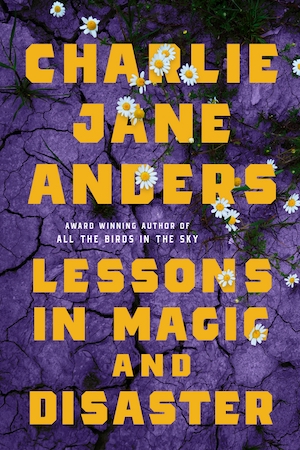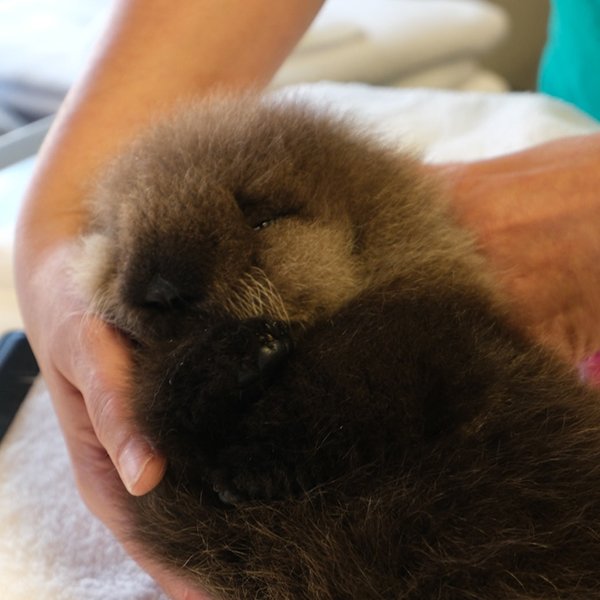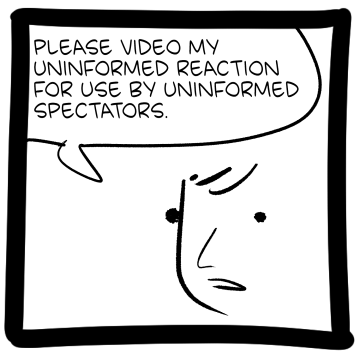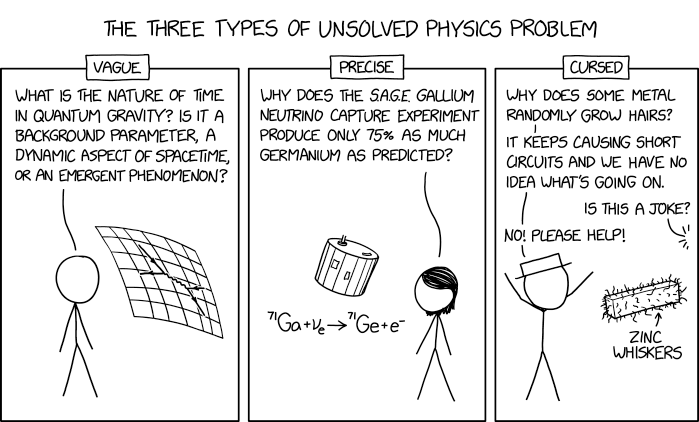‘Perversion of Justice’ revisited
Jul. 15th, 2025 03:12 amBibliographical cornucopia for linguists, part 2
Jul. 14th, 2025 09:20 pm- "Context Shift, Word Drift: The Meaning Transference of the Word Prèet in Thai Society." Kumhaeng, Korrakot et al. Humanities and Social Sciences Communications 12, no. 1 (July 8, 2025): 1050. https://www.nature.com/articles/s41599-025-05454-y.
This research investigates the semantic change and conceptual metaphor of the Thai word prèet (/เปรต/), which originates from the Pali-Sanskrit term meaning “departed.” The primary objective is to explore how the term’s meaning has shifted in contemporary Thai society, where it is now used pejoratively to criticize behaviors such as excessive greed, gluttony, immorality, and social deviance. Data for this study are drawn from both historical texts, particularly the Traibhumi Phra Ruang (a prominent Thai Buddhist text from the 14th-century Sukhothai period), and modern Thai linguistic usage. The analysis employs conceptual metaphor theory, focusing on metaphors like SOCIAL DEVIANCE IS MONSTROSITY, MORAL FAILURE IS DEGRADATION, GREED IS HUNGER, and SPIRITUAL LIMINALITY IS MONSTROSITY. to understand how these shifts reflect changing cultural and societal values. Additionally, Impoliteness Theory is applied to examine how prèet functions as a linguistic tool for social critique. Findings show that the semantic evolution of prèet reveals an intricate relationship between language, culture, and metaphor, as it transitions from a religious concept to a vehicle for social commentary. The implications of this study highlight the dynamic nature of language in reflecting societal shifts.
- "When Dialects Collide: How Socioeconomic Mixing Affects Language Use." Louf, Thomas et al. EPJ Data Science 14, no. 1 (July 10, 2025): 47. https://epjdatascience.springeropen.com/articles/10.1140/epjds/s13688-025-00563-9.
The socioeconomic background of people and how they use standard forms of language are not independent, as demonstrated in various sociolinguistic studies. However, the extent to which these correlations may be influenced by the mixing of people from different socioeconomic classes remains relatively unexplored from a quantitative perspective. In this work we leverage geotagged tweets and transferable computational methods to map deviations from standard English across eight UK metropolitan areas. We combine these data with high-resolution income maps to assign a proxy socioeconomic indicator to home-located users. Strikingly, we find a consistent pattern suggesting that the more different socioeconomic classes mix, the less interdependent the frequency of their departures from standard grammar and their income become. Further, we propose an agent-based model of linguistic variety adoption that sheds light on the mechanisms that produce the observations seen in the data.
- "Re-Examining Second Language Acquisition of English Reflexives: New Evidence for Lexical Learning Driven Process and against First Language Transfer." Zeng, Li et al. Humanities and Social Sciences Communications 12, no. 1 (July 9, 2025): 1063. https://www.nature.com/articles/s41599-025-05466-8.
This study re-examines second language (L2) acquisition of English reflexives by testing 98 first language (L1)-Chinese learners of L2 English with different proficiency levels and 12 native English speakers as controls. Using a truth-value judgment task, we systematically tapped the learners’ judgments of various types of antecedents including long-distance objects. The results show that L2 English learners’ errors in referring English reflexives to long-distance antecedents cannot be due to L1 transfer of Chinese reflexive referential pattern. Instead, these errors align with those documented in the literature on native English children’s acquisition of reflexives. Moreover, as L1-Chinese learners’ English proficiency improved, most of them unlearned the errors, and performed similarly to native English adult controls. This developmental trajectory recapitulates the pattern seen in native English children’s acquisition of reflexives. These findings cast doubt on the view of L1 Chinese transfer and provide support for the Lexical Learning Hypothesis.
- "Metaphor Interpretation in Jordanian Arabic, Emirati Arabic and Classical Arabic: Artificial Intelligence vs. Humans." Zibin, Aseel et al. Humanities and Social Sciences Communications 12, no. 1 (July 1, 2025): 942. https://www.nature.com/articles/s41599-025-05282-0.
This study examines how well humans, both Jordanians and Emiratis, and four AI tools—ChatGPT-4, ChatGPT-3.5, Google Gemini, and Ask PDF—can understand metaphors in Classical Arabic (CA) and its everyday forms in Jordanian Arabic (JA) and Emirati Arabic (EA). We tested fifty participants from Jordan and the UAE on their grasp of various colloquial and CA metaphorical expressions. Two distinct tests were employed, each comprising 40 items. Test 1 was administered to Jordanian participants and included 20 metaphorical expressions in Jordanian Arabic and 20 metaphorical expressions in Classical Arabic. Similarly, Test 2 was administered to Emirati participants and contained 20 expressions in Emirati Arabic and 20 expressions in Classical Arabic. The Mann–Whitney U test was employed to evaluate differences in accuracy and interpretation between AI tools and human participants from both regions in the contexts of colloquial and Classical Arabic. The results showed that participants from Jordan had a better understanding than the AI tools, likely due to their strong cultural background. In contrast, the Emirati participants performed similarly to the AI. The AI tools were more effective at interpreting CA metaphors compared to Emirati participants; AI tools are typically trained on diverse datasets and that usually leads to strong performance in interpreting formal or Classical Arabic expressions. These findings emphasize the need for improvements in AI models to boost their language processing abilities, as they often miss the cultural aspects required for accurately interpreting figurative language. This study adds to the ongoing discussion about AI and language interpretation, revealing both the potential and the obstacles AI faces when dealing with culturally rich and context-sensitive language.
Religions, topolects, language learning, AI — linguistics is exciting and ever changing, never boring.
[Thanks to Edward M "Ted" McClure]
Is Epstein actually Peanut the Squirrel?
Jul. 14th, 2025 08:12 pmYou may have all forgotten Peanut the Squirrel. Short version: a man rescued a baby squirrel, looked after it then it became a bit of an Instagram celebrity. In 2024, New York state authorities confiscated the squirrel and because it was also living with a racoon, euthanised it to test for rabies (it was negative). Sad story. Killing a guy’s pet squirrel sounds awful but also don’t interact with wild animals in that way for a long laundry list of reasons.
That there was a bit of a media storm about Peanut (sometimes styled “P’nut”) was not much of a mystery. The squirrel was internet famous and people saw it as unfeeling authorities killing somebody’s pet even though it was far more complicated than that.
However, the timing of Peanut’s death was in very close proximity to the 2024 US Presidential Election. Online, the Trump campaign did not have the same energy as it had in 2016 (one of the reasons I thought he would lose) but overnight Peanut became a symbolic martyr for the cause of MAGA. J.D.Vance and Donald Trump both made comments on the squirrel’s death, tying the event to the Democratic Party. Our old friend Vox Don’t-Call-Him-A-Nazi Day stated:
“If they’ll murder a harmless squirrel for no reason, do you really think they won’t kill you and your family if given even half the chance?”
https://web.archive.org/web/20250714191635/https://voxday.net/2024/11/03/they-kill-pets/
You can pick almost any major (or minor) talking point of the right these days and find a mess of hypocrisy and incoherence, so it is hardly a surprise that we will find that with the brief adoption of a dead squirrel by the MAGA movement.
In reality, the right doesn’t have any principled objection to killing wild animals and it is even fine with notable members of the Trump administration killing their own pets. More apparently (and disturbingly) they are not only absolutely fine with the federal government using sweeping powers and brute force to terrorise ordinary people but they are actually cheering it on.
Peanut is a good example of what I describe as “strong beliefs but not firm beliefs” on the right. Vance, Trump and Day may have been overtly cynical on the issue but Peanut gained traction on the right because people had genuine feelings on the issue. And then they forgot about them. Niether Trump nor the MAGA movement nor the right in general came out of the Peanut storm with a continuing interest in how best to deal with people adopting wild animals as pets.
In addition, Day’s comment is an excellent illustration of Wilhoit’s law:
“Conservatism consists of exactly one proposition, to wit: There must be in-groups whom the law protects but does not bind, alongside out-groups whom the law binds but does not protect.”
https://crookedtimber.org/2018/03/21/liberals-against-progressives/#comment-729288
Change the circumstances a little e.g. Peanut is killed in a Republican jurisdiction and the owner appears more culturally of the left, then the reaction on the right would have been different. I’m not saying every Trump supporter would have cheered on the killing of Peanut but it simply wouldn’t have been the thing it was. Additionally, more on the right would have mocked Peanuts’s owner for not understanding wild animals or not getting that animals die all the time etc etc.
Day’s warning about the government coming to kill you is not false. Government power is used to threaten ordinary people. What Day was omitting was that the policies he supports INCREASE both the power and likelihood of agents of the government doing that. The massive increase in violence by ICE in the US and the massive additional funding being given to the agency is an obvious example…but of course, for the right this is force being directed at a generalised “them” — a set of “others” who form an out-group who the right sees as being the appropriate target of government violence.
What has all that to do with Jeffery Epstein?
The right’s interest in Epstein wasn’t quite as shallow as their interest in Peanut the squirrel but it was similar. The Pizzagate and Qanon conspiracy theories claimed a vast conspiracy of child abuse was being conducted by the most powerful people in the world. Epstein’s crimes were real and that served two purposes on the right. Firstly for the more brain-melted Qanon section of the right, the real criminal case against Epstein looked like the crack that would break open the whole conspiracy they imagined. Meanwhile, for those on the right swimming in the same waters as Qanon, Epstein was a way of engaging with the same Qanon-like outrage without having to fully commit to the rest of the conspiratorial baggage.
Change the circumstance a little, and the MAGA crowd would have no problem with a wealthy sexual predator who targetted teenage girls, so long as the predator in question was seen as being on their side.
Will the right forget about Epstein the same way they forgot about Peanut? It won’t be as easy but certainly you can now see people trying to change gears on the topic. Here’s another old pal of the blog, Sarah Hoyt on the topic:
“The thing is…. is it the most important thing right now? And if so, why is it the most important thing right now? Sure, I don’t think Epstein killed himself. But he’s been dead now for…six years? And his list, such as it is, has been in the hands of the Biden administration funny fingers for that long.
But now, suddenly, if it’s not released this week, MAGA is going to take revenge on the administration and all is lost?
Give me a break. No, seriously. Also, go look at those accounts. Most of the accounts screaming on the blogs aren’t people I’ve seen there before. Twitter? I confess I don’t look closely at twitter accounts. Also those accounts can’t keep the Jew-hatred out of the screeds.”
https://accordingtohoyt.com/2025/07/13/okay-i-have-to-say-this/
I think it is still too early to tell. You can see different streams of the right trying to rationalise the shift but it is also clear that if the Trump administration had more gently changed track on Epstein or just more blatantly lied in a way to blame Biden, they might have got away with it.
I don’t think the Epstein issue will completely fracture the right. However, it does erode support for Trump himself on the more extreme parts of the right. That matters because a lot of Trump’s bully power in the Republican party comes from this capacity to direct trolls and online partisans to specific targets, and it is exactly these kinds of trolls and online partisans who are the most discombobulated by Trump’s reversal on the Epstein issue.
The half-life of right wing attention span functions the same for both Peanut and Epstein but the numeric value of that half-life is longer for Epstein. Put another way, if Trump on November 4 2024 has publicly stated that maybe Peanut’s death wasn’t a big deal, it might have cost him the election but if he’d said it on December 4 many people wouldn’t have even remembered who Peanut was or why they cared. Trump hit the wrong point of that attention span curve with Epstein.
Tom Holland Says Spider-Man: Brand New Day Will Go “Old School,” in a Good Way
Jul. 14th, 2025 06:20 pmTom Holland Says Spider-Man: Brand New Day Will Go “Old School,” in a Good Way
Published on July 14, 2025
Screenshot: Marvel Studios
Share
Why Do I Love Charts? Let Me Count the Ways.
Jul. 14th, 2025 06:00 pmWhy Do I Love Charts? Let Me Count the Ways.
Published on July 14, 2025
Photo by Niko Nieminen [via Unsplash]

Photo by Niko Nieminen [via Unsplash]
In my quest to work through all the tabletop roleplaying games that I own but have never run, I am currently gamemastering Fabula Ultima. Part of the attraction is that FU encourages a collaborative approach between players and gamemaster, an approach with which I am not especially comfortable. Personal character growth (for me at least) is inevitable.
In accordance with the collaborative narrativist spirit of the game, I have dialed back my control freak tendencies, which is why, while my master player character chart lists names, core stats, figured stats, defensive stats, classes and which class abilities each PC possesses, it does not detail what each ability does, nor does it list spells1.
All of which brings me to my question: Why are charts so cool2?
On a personal level, the charts I create for tabletop roleplaying games3 are a means of circumventing unreliable memory. All the character names are right there at my fingertips… provided I remember to open the relevant file. The charts I create for the works I review serve a similar purpose as I juggle a number of often incompatible review goals. Much the same is true for charts documenting the books I receive, especially since I don’t seem to have object permanence for ebooks.
More interestingly, a well-designed chart will highlight patterns that might otherwise be overlooked. This ensures that I do not, for example, build an entire scenario around player character abilities that none of the PCs actually have4, or spend an entire year without reviewing any books by women, or, on a more positive note, determine that no single publisher had a lock on Best Novel Nebula Awards, reveal that SFF authors prefer oligarchies to other forms of government, and that publishers currently seem oddly shy about unambiguously labeling books as part of series. Or, in what was for me an astonishing finding, that charts tracking absences are extremely confusing for most people. I didn’t know that! But now I do.
Most importantly, a well-designed, well-presented chart is a thing of beauty. What could possibly match the endorphin rush triggered by glorious data presented in an eye-catching, easily-comprehended format? Charts to order chaos, they illuminate an often-murky world, they make us as gods5!
At least, that’s why I love charts. No doubt there are dozens of equally compelling reasons to adore charts6. If I’ve overlooked your favorites, feel free to mention them below.[end-mark]
- Yet.
 ︎
︎ - I know not everyone realizes that they think charts are cool. Charts are like broccoli, or liver, something everyone adores provided only that they are presented correctly.
 ︎
︎ - You know how many older persons encounter some minor change that turns out to be their personal final straw? Having to remember to prepend “tabletop” to roleplaying games lest people think I am talking about computer games comes close to being that for me.
 ︎
︎ - Ah, memories of the moment in a Traveller campaign where we realized that while we had a functioning starship, none of the remaining player characters had the navigation skill needed to get it safely from star to star.
 ︎
︎ - And provide us with a deeper appreciation for the design choice that leads Excel to default to treating all data as dates.
 ︎
︎ - Those long-suffering persons who languish under my house management skills at the theater would point out that the chart I create documenting when they worked and for how long plays an important role in their getting paid. Remember, money can be exchanged for goods and services!
 ︎
︎
The post Why Do I Love Charts? Let Me Count the Ways. appeared first on Reactor.
Babylon 5 Rewatch: “War Without End, Part Two”
Jul. 14th, 2025 05:00 pmBabylon 5 Rewatch: “War Without End, Part Two”
Published on July 14, 2025
Credit: Warner Bros. Television
Share
Who Gets a POV In Your Story? It’s a Political Decision
Jul. 14th, 2025 04:00 pmWho Gets a POV In Your Story? It’s a Political Decision
Published on July 14, 2025
Photo by Aaron Burden [via Unsplash]

Photo by Aaron Burden [via Unsplash]
POV is one of those writing issues that get a little bit thorny—because there are people out there who will tell you there are Strict Rules about how many POVs you can have, and how much you can shift between them, and so on.
A lot of people seem to hate omniscient narrators—despite the fact that many of the world’s most beloved books are written in omniscient third person. But also, some very influential writers advocate a strict economy of viewpoints, in which a book must establish its POV characters early on and not introduce any more POVs later on, no matter how convenient it might be to see events from a particular character’s perspective.
Because I don’t believe in rules—literally, there are no rules when it comes to writing—I feel like you should use as many POVs as you want to, as long as they’re helping you tell the story in the most entertaining, immersive way possible. Have a single first-person narrator, or a few. Have a single third-person POV, or a ton. Go omniscient, whatever. Go nuts.
The question of who gets to have a POV in a story is artistic—but also kind of political, because it goes to the heart of whose perspective counts.
When I started out writing fiction as a career, I mostly wrote in the first person, because I love a mouthy, obnoxious first-person narrator. But I kind of hit a wall, and I read some writing advice that said it was easier to sell short stories written in the third person. Plus writing in the third person felt like a fun challenge, so I switched. And sure enough, I found that writing in third person forced me to describe things differently, and to think about the position of the narrator in relation to the events in a way that I hadn’t with first person. (The first draft of Lessons in Magic and Disaster was written in first person, but I changed it to third person in revision for a similar reason.)
My first novel, Choir Boy, has a single third person POV, that of the main character, Berry. But the narrator is free to make all sorts of silly observations about the town where Berry lives—like, I think there’s a long elegiac section about the slow decline of the noodle-stretching factory across the street from Berry’s apartment at one point. Still, I kept my narrator from going too omniscient, because I’d internalized a strong prohibition (especially in science-fiction circles) on “head-hopping,” or allowing the reader to glimpse more than one character’s thoughts at any given moment. I had learned to think of an omniscient narrator as the third rail of fiction: touch it at your peril.
Imagine my surprise when the biggest successes of my career came from a novelette called “Six Months, Three Days” and my novel All the Birds in the Sky, both of which feature gently omniscient narration. There’s one moment in All the Birds in the Sky that I was convinced would make people rage-quit the book. It’s the bit where Laurence and Patricia are sitting under the escalator speculating about people based on their shoes—and then the narrator reveals that they’ve guessed correctly about the last guy who went past, who is indeed an assassin named Theodolphus Rose. I almost cut this bit several times, convinced people would tell me it was the reason they abandoned the book. Instead, people kept telling me it was their favorite moment in the entire book.
Lately, I’ve read more and more books that casually throw in extra POVs here and there—some side character who’s only stood in the background of scenes will suddenly have a POV chapter in the final stretch of the book. I feel like young-adult fiction started playing fast and loose with POV in the 2010s, and this has now seeped into adult fiction. I’ve also seen more ambitious experiments, like The Ten Percent Thief by Lavanya Lakshminarayan, where each chapter is told from a brand new POV.
Some of my favorite memories of reading involve surprising POV shifts—like, I remember being a kid and reading Terrance Dicks’ surprisingly good novelization, Doctor Who and the Auton Invasion. Dicks would dip into the head of a random side character for a few paragraphs, someone who might not have even gotten any dialogue on screen, and it was dazzling. Everyone has their own opinion, even the guy standing in the corner while the Doctor grandstands!
There’s something kind of magical about realizing that everyone in a story is a person, and nobody is an NPC.
Still, I have often found myself feeling cautious about adding more POVs to a story—because I do have the sense that a POV should be immersive. In other words, you should fully inhabit the mind of a character if you’re going to see through their eyes. It’s a bit of an imaginative lift each time, which requires you to think about who this person is, where they come from, how much information they have, and what’s going on. I do think that even if a POV only appears a couple of times in a long book, you need to make sure there is a unique attitude and set of concerns animating this person, so it stands out from the other POVs at least somewhat.
I get more annoyed when a book has multiple first-person narrators whose voices are too identical—but even with third-person POVs, ideally you want them to be thinking differently. It’s sort of the same problem as when all your characters talk the exact same way.
I’ve been thinking a lot lately about POVs, because I’ve found out the hard way that it’s super challenging to make readers fully identify with someone whose thoughts we never experience. I’m not saying it’s not doable, it’s just tough—especially with characters who make unsympathetic choices or behave even a little selfishly.
When I wrote The City in the Middle of the Night, I decided that only Sophie and Mouth would have POVs in the book. (In fact, originally it was going to be just Sophie, and after I had written a couple of drafts I realized the book needed more of an edge, so I promoted a random smuggler to a second POV.) At the time, making Sophie first-person present tense and Mouth third-person past tense felt a bit daring, even though young adult fiction had been doing this sort of thing a lot.
Anyway, at a certain point I ran into a question: should I give Bianca some POV chapters as well? For those who haven’t read the book, Bianca is someone who starts off idealistic and radical (but unaware of her own privilege in various ways), and she ends up becoming a bit of a monster. I have a certain amount of sympathy for Bianca, even though her actions are unforgivable. (I also have a sneaking suspicion that if Bianca were a man, she would have had a lot of people defending her and demanding a redemption arc.) In any case, I toyed with giving her a POV, to make her actions more legible to the reader. But I didn’t want to give her equal space to Sophie and Mouth, and I wasn’t sure if it would work to just dip into her POV a couple of times. More importantly, I wanted to preserve the surprise of Bianca’s heel turn, and I didn’t think I could do that while letting people in on her thought process.
I’ll never know how things in the book would have turned out if I’d given Bianca some POV chapters, but on balance I’m glad I didn’t. It kept the focus on what I wanted the book to be about: Sophie and Mouth both bought into other people’s ideals of justice and community, and they both learn the hard way that they need to make their own.
But more recently, I have been finding that when in doubt, it’s usually a good idea to give someone a POV. In my upcoming novel Lessons in Magic and Disaster, I originally included only a couple of brief sections from the POV of Jamie’s mother Serena. And I found some of my beta readers had a hard time feeling invested in Serena or understanding why she does the things she does in the story. The book fails miserably unless you care what’s happens to Jamie’s mom. And I have so much love and empathy for Serena, someone who consistently tries to do the right thing and struggles to shoulder the weight of grief and trauma.
So I gave Serena way more space in the book, including a huge chunk of flashbacks to her early years as an activist and her marriage to Jamie’s other mother, Mae. As soon as I did this, it was obviously the right choice: it deepened all of the other themes and relationships in the book to have this level of understanding of Serena’s joys and struggles.
So lately, I’ve been thinking about the politics of POV.
The issue of whose perspective is included in a story feels inherently political. A character who’s only seen from the outside inherently becomes a bit of a cipher—or an NPC, as I said above. I wrote before about the idea that we should stop talking about characters having agency in a story and instead talk about whether a character gets to be an authority on their own life. The characters who matter in a story tend to be the ones whose opinions shape how we feel about the overall events.
So as I start crafting my next couple of novels, I’m increasingly thinking about how to be a bigger POV slut—because I think it’s a matter of simple fairness to allow as many voices as possible to exist within the story.
I do think a POV character needs to pull their own weight narratively—not just in terms of witnessing events that nobody else in the story could have witnessed, but also by adding a different sensibility. Or set of concerns. Or something that might change how we think about the story a bit.
Especially when someone is a character that readers might be predisposed to judge harshly because of internalized prejudices, I think it’s important to try to represent that person’s viewpoint in the story. But also, people whose actions shape the narrative, in ways that feel startling or confusing, can really benefit from getting to tell their side of the story. Lately I’m noodling on the idea that it’s not so much a question of “How can I structure the story in such a way as to keep the narrative moving” as “Who is being silenced in this story, and do they deserve a voice?”
I guess I’m craving more anarchy in my stories, because I have read some stories lately that were gloriously promiscuous in their use of viewpoints, and I was surprised by how much it enhanced the experience. And because I feel like the dominant experience of 2025 is being trapped in our own perceptions of reality, with less and less ability to know how other people are thinking and feeling about the same events. One of the great joys of fiction is that it lets you understand that any one event can be understood from many different angles. (See: Rashomon.)
A few caveats apply: I still love an omniscient narrator and I’m probably going to try to keep making that happen. Also, here’s where I admit that my next novel, the one that I’m hoping comes out in 2026, has only one POV for reasons that I hope will become clear. Finally, I do think that if a POV fails to stand out or feel unique, it can be worse than not going into that person’s mind at all.
All in all, though, I have been getting the feeling lately that the era of POV puritanism—the idea that you gotta pick a small number of major POVs and stick to them—is over, and the era of “anything goes” has begun. And I couldn’t be happier, not just from a writing standpoint but also from a standpoint of wanting to experience as many ways as possible of looking at a story within that story.[end-mark]
Buy the Book


Lessons in Magic and Disaster
This article was originally published at Happy Dancing, Charlie Jane Anders’ newsletter, available on Buttondown.
The post Who Gets a POV In Your Story? It’s a Political Decision appeared first on Reactor.
Everyone’s Favorite Cetacean: The Dolphin
Jul. 14th, 2025 03:00 pmEveryone’s Favorite Cetacean: The Dolphin
Published on July 14, 2025
Photo by Ranae Smith [via Unsplash]

Photo by Ranae Smith [via Unsplash]
On the opposite end of the cute spectrum from the orca is what we mostly mean when we say “dolphin”: the bottlenose dolphin made popular by films and television shows, notably Flipper, and some of its relatives including the spinner and the spotted dolphin. Orcas are actually the largest of the dolphins, and both are, more broadly, toothed whales, related to the beluga and the sperm whale (versus baleen or krill-sifter whales like the humpback). Toothed whales are predators, and as a class, they’re highly intelligent. We’ve certainly seen that when it comes to orcas.
Dolphins with their playful personalities, relatively unthreatening size, and their naturally adorable, smiling faces are the most appealing and accessible of the cetaceans. They seem to enjoy human contact, or at least not to be overtly stressed or terrified by it. “Swimming With Dolphins” experiences are a staple of the vacation industry.
Human-dolphin contacts go back a long way. There’s an ancient Greek story of a man called Arion, a poet and singer who had been robbed and thrown overboard by the crew of a ship. A dolphin rescued him and carried him on its back to the shore. May be a myth. May not be. It’s not impossible, from what we know of dolphins.
These are highly social animals. They live in pods or family groupings, and they have a language, though it’s not exactly like the human version. It appears that they have names, and call each other by them. They hunt together, and they use strategy and tactics. They play—constantly, enthusiastically, creatively.
And they use tools. Take for example the dolphins of Shark Bay in Australia. A particularly sprightly series of articles describes two different groups, the spongers and the shellers (as well as the beachers, who herd fish to shore and beach themselves to feed).
The spongers select a sponge from the sea bed and fit it to their noses, and use it as a sort of glove to protect their skin while they forage for sea perch. They’ll carry a sponge around and reuse it. It’s not a natural or instinctive behavior; it’s passed down from mother to daughter and sometimes son. Spongers tend to associate with each other, share tips and finer points, and refine their art as they mature.
Shellers are a different cultural group, a bit more equally divided between the sexes. They lift giant sea snail shells from the bottom, scoop up fish, carry the shells to the surface, wiggle and flip them over, and dump the fish into their mouths. The level of sophistication it takes to do this, and the number of steps and the degree of finesse, is pretty impressive.
But not all that surprising. Dolphins have big brains for their size, comparable to humans. Also like humans, they have a highly developed neocortex (associated with problem-solving and self-awareness among other things) and Von Economo neurons, which are linked with emotions and social cognition. There’s a lot going on there; how much, we’ve barely begun to understand.
We want to. We try. Someday maybe we’ll crack the code of dolphin language. We’ll learn more about how they perceive the world: how their sonar works, and what it feels like.
We know it can act like ultrasound, allowing them to see into and through a solid body. They’re fascinated by pregnant human swimmers. Imagine being able to look at another person and see what’s going on under the skin, and know what’s happening inside. We have to invent machines for this. Dolphins come with it already installed.[end-mark]
The post Everyone’s Favorite Cetacean: The Dolphin appeared first on Reactor.
Bibliographical cornucopia for linguists, part 1
Jul. 14th, 2025 02:58 pmBibliographical cornucopia for linguists, part 1
Since we have such an abundance of interesting articles for this fortnight, I will divide the collection into two parts, and provide each entry with an abstract or paragraph length quotation.
- "Word Learning as Category Formation." Caplan, Spencer. PLOS ONE 20, no. 7 (July 3, 2025): e0327615. https://journals.plos.org/plosone/article?id=10.1371/journal.pone.0327615.
A fundamental question in word learning is how, given only evidence about what objects a word has previously referred to, children are able to generalize to the correct class. How does a learner end up knowing that “poodle” only picks out a specific subset of dogs rather than the broader class and vice versa? Numerous phenomena have been identified in guiding learner behavior such as the “suspicious coincidence effect” (SCE)—that an increase in the sample size of training objects facilitates more narrow (subordinate) word meanings. While SCE seems to support a class of models based in statistical inference, such rational behavior is, in fact, consistent with a range of algorithmic processes. Notably, the broadness of semantic generalizations is further affected by the temporal manner in which objects are presented—either simultaneously or sequentially. First, I evaluate the experimental evidence on the factors influencing generalization in word learning. A reanalysis of existing data demonstrates that both the number of training objects and their presentation-timing independently affect learning. This independent effect has been obscured by prior literature’s focus on possible interactions between the two. Second, I present a computational model for learning that accounts for both sets of phenomena in a unified way. The Naïve Generalization Model (NGM) offers an explanation of word learning phenomena grounded in category formation. Under the NGM, learning is local and incremental, without the need to perform a global optimization over pre-specified hypotheses. This computational model is tested against human behavior on seven different experimental conditions for word learning, varying over presentation-timing, number, and hierarchical relation between training items. Looking both at qualitative parameter-independent behavior and quantitative parameter-tuned output, these results support the NGM and suggest that rational learning behavior may arise from local, mechanistic processes rather than global statistical inference.
- "Investigating Intentionality in Elephant Gestural Communication." Eleuteri, Vesta et al. Royal Society Open Science 12, no. 7 (July 9, 2025): 242203. https://royalsocietypublishing.org/doi/full/10.1098/rsos.242203.
A crucial feature of language is the ability to communicate cognitive goals to a specific audience, i.e. goal-directed intentionality. Core criteria for this ability include (i) audience directedness: signalling in the presence of an attentive audience, (ii) persistence: continuing signalling until goals are met, and (iii) elaboration: using new signals following communicative failure. While intentional use has been demonstrated in individual gestures in some non-primates, primates—in particular apes—show this ability across many gestures. But is goal-directed intentionality across many gestures restricted to primates? We explored whether savannah elephants use many gestures with goal-directed intentionality. We presented semi-captive elephants with desired and non-desired items, recording their communicative attempts when an experimenter met, partially met or failed to meet their goal of getting the desired item. Elephants used 38 gesture types almost exclusively when a visually attentive experimenter was present, demonstrating audience directedness. They persisted in gesturing more when their goal was partially as compared with fully met but showed no difference in persistence when the goal was met or not met. Elephants elaborated their gesturing when their goal was not met. We find goal-directed intentionality across many elephant gestures and reveal that elephants, like apes, assess the communicative effectiveness of their gesturing.
- "Mountain Chickadee Chatter: Scientists Are Decoding the Songbird's Complex Calls." Haley, Sofia Marie. The Conversation, May 27, 2025. http://theconversation.com/mountain-chickadee-chatter-scientists-are-decoding-the-songbirds-complex-calls-247091.
The extensive vocal repertoire of mountain chickadees has yet to be fully documented. There are five basic categories of call types:
-
- Contact calls: communicate identity, sort of like a name, and location.
- “Chick-a-dee” calls: coordinate flock movement and communicate a variety of complex information about the environment, from food availability to predator presence and type.
- Alarm calls: alert others of the presence of a predator.
- Begging calls: used by chicks or females to elicit feeding behavior from males.
- Gargle calls: advertise dominance over other individuals in a flock, primarily used by males.
“Chick-a-dee” calls contain several elements resembling the basic elements of human grammar. Essentially, the various sounds a chickadee utters mean different things, similar to words in human languages. And the way that a chickadee combines these sounds changes the meaning. Word order matters, just like grammar matters in human language. If a chickadee were to phrase its calls in the wrong note order, the call would no longer convey the same meaning, even if composed of the same elements.
The author distinguishes between the two large categories of songs and calls. A video is included; in it you can hear the author distinguish and mimic different types of bird talk
- "The Emoji Tongue." Longreads, July 1, 2025. http://longreads.com/2025/07/01/emoji-language-keith-houston/. Excerpt from Face with Tears of Joy: A Natural History of Emoji. Houston, Keith. 1st ed. W. W. Norton & Company, Incorporated, 2025. https://wwnorton.com/books/9781324075158.
In 2015, the editors of the Oxford English Dictionary went all-in on the still-novel phenomenon of emoji. That year, the guardians of the venerable OED named the FACE WITH TEARS OF JOY emoji ()—now, as then, the world’s most popular emoji—as Word of the Year, beating out such zingers as “ad blocker,” “Brexit,” “lumbersexual,” “on fleek,” and “sharing economy.” For emoji to be blessed in this way by the OED was remarkable enough, but it also invited a question: if was a word, did that make emoji a language?
This morning I stood out on my stoop and listened to a flock of crows conversing. After about 5 minutes, I could distinguish a variety of different caws and calls. Some were soft and subdued, almost like whispers, others were excited and raucous. I was convinced that, if I listened to them for half a day and observed their behavior in relation to the caws and calls, I would be able to figure out what they were communicating to each other.
Then I sat down at my computer and wrote some messages to friends. It has become my custom to follow my signature with the emoji for a snail, which happens to be my logo, and has been for many decades. I don't know if it will come through in WordPress, but I'll give it a try: VHM . That is pronounced "snail / wōniú / ghongha / ciplēkirā / katatsumuri / etc., etc., etc."
[Thanks to Edward M "Ted" McClure]
BEWARE THE CON RATS
Jul. 14th, 2025 01:00 pmSummer is the reward students get for successfully completing another year of educational excellence. Or for partying all year and flunking out. (Nobody said life was fair, kids.)
So while graduation season may be over, I think it's time our bakers had a little summer schoolin'.
Bakers? Welcome to "How-To-Spell-'Congratulations'-101."

I can see it's going to be a long day.
Alright, let's practice: C-O-N-G-R-A-T-U-L-A-T-I-O-N-S. See? Now you try.

I dare you to read that aloud.
("Comgratatum?")
Try again.

G, you shouldn't have.
No, really.
And don't think I'm not on to your latest scheme, bakers. You know, the one where you just pipe a heap of scribbles halfway through the word and hope no one notices?

Cheater.


The best part is how you can still clearly see those last two are misspelled. Next time just chuck some High School Musical flotsam on there.

At this point, even I have forgotten how to spell it. I would "COHGRADULITTE" you, bakers, but I don't think I can handle that level of irony.
Let's try a new approach: just shorten it to "Congrats!" That's easy enough, right?

*sigh*
What is wrong with you people?
For a wild, hopeful second there I thought this had something to do with comic conventions starting up week:

"Watch out for those Con Rats!"
...but then I realized I it was a different kind of "con." Rats.
Well, you've all failed the course, bakers. So, hey, get out there and continue collecting a paycheck for brutalizing the English language! Woo! Yeah!
Oh, and kids? Stay in school. Or don't.
Honestly, your bakery manager probably won't give a con rat's @ss.
Thanks to Nancy H., Jessica E., Julia L., Michelle W., Meghan H., Amanda N., Julie D., Elizabeth B., & Bailey for the pep talk!
*****
P.S. Here's a (hilarious) reminder that English is almost as confusing as these cakes:

P Is for Pterodactyl: The Worst Alphabet Book Ever
*****
And from my other blog, Epbot:

Wind and Truth Reread: Chapters 78-80
Jul. 14th, 2025 02:00 pmWind and Truth Reread: Chapters 78-80
Published on July 14, 2025
Share
Happy First Rescueversary, Luna!
Jul. 14th, 2025 12:04 pm
Via Vancouver Aquarium, which writes:
Happy first rescueversary to sea otter Luna! Found separated from her mother on Vargas Island near Tofino, BC on this day in 2024, she was deemed non-releasable and transferred to the Vancouver Aquarium alongside pup Tofino later that year.
Recursive summarization
Jul. 14th, 2025 10:20 am
The mouseover title: "I saw an article that said it was a 3 minute read then offered an AI summary, and I believe it may be included in an eventual epitaph for civilization."
The Aftercomic:

Of course it's not just news…
- "Ambience Healthcare’s “Patient Recap” Offers Clinicians the First Chart Summarization Technology from an Ambient AI Platform"
- "WhatsApp adds Meta AI-powered 'Message Summaries' for all those unread texts"
- Using Meeting Summary with AI Companion
So far, none of the AI helpers offer emotionally indicative grunting noises. At least not as far as I know, though maybe Grok is on it?
Accurate graphical summarizations would actually sometimes be useful. Current AI poster generation is about posters to advertise an event, not the sort of figures that would be useful as a summary of complex material, e.g. here:
Susan’s Salon 2025: 13-14 July
Jul. 13th, 2025 03:24 pmCats are cooler than dogs but dogs are nicer people.
- Susan’s Salon is a weekly post for reader comments on any topic they like. This includes personal news, self-promotion, politics, general interest, knitting patterns or anything else including invisible ink formulas.
- Nothing hateful and no cranky exchanges please.
Sunday Sweets: C'est Bon!
Jul. 13th, 2025 01:00 pmBonjour, mon amis! Today's sweets are mostly inspired by Marie Antoinette, so you know what that means: Prepare your eyeballs for an over-the-top feast of excessiveness!
(And no, we won't be having any gruesome headless sweets commemorating Marie's rather gruesome end. Sheesh. Get your mind out of the guillotine.)
Yep, it's all decadence and girliness from here on out! And yay for that, because have I mentioned I've been helping my husband Matt at football camp all week? Yes, I've been sharing a house with 25 teenage boys for the last five days. I could use a little girliness up in here.
Fortunately this first beauty is a sight for my pink-deprived eyes:

And how appropriate that it includes a fabulous fondant fan, because I'm already feeling the need to fan myself!

[Swoon!] Such loveliness!
And here's the lady of the hour herself...

By CakeCentral member Lindasuus
...sweetly putting to shame every Barbie-torso-stuffed-in-a-cake ever made.
This one is so absolutely flawless and stunning, I'm convinced it doesn't really exist.

By Cake Coquette (More detail shots at the link)
We've all just collectively dreamed it or something. (We have excellent imaginary taste, you and I!)
Now here's a solution to that pesky problem of how to hide plastic cake pillars: Simply pipe a decorative cage of icing between the tiers for an elaborate camouflaging exoskeleton of awesomeness!

Er, on second thought, you might want to just leave that to the pros.
I thought this Fabergé Egg cake was a winner on its own ... (Seriously, doesn't it look like a 1st place trophy to you? Or is that the football camp talking?)

...but then I scrolled down and realized the egg was only one quarter of the whole cake!

Wow. The layers look like carved marble or porcelain, and I love those unique shapes, too. It's hard to believe the tiers wouldn't shatter when you went to cut a slice!
I think more food should be adorned with edible pink tassels, don't you?

I love this color scheme so much; fun, flirty, and fit for a queen. I bet ol' M.A. would lose her head over it!
Oooh, sorry Marie. Too soon?

Submitted by Anne Marie B. and made by Rosey Confectionary Sugar Art
Oh, don't stare at me with that doleful expression. Turn your attention instead to the amazing miniature dessert table in your boudoir. And hey, is that rug edible too? Incredible.
Here comes another amazing egg cake. I'm not really sure if fancy eggs are a Marie Antoinette thing, but they're both similarly lavish, so it works for me.

Just gorgeous. If I was serving this cake, I don't think I'd let them eat it, youknowwhatI'msayin?
(Like "Let them eat cake?" Marie's famous line? You know? Yes? Never mind.)
This is probably my favorite cake today:

Submitted by Devon C; by Cake Opera Co.
I thought it was Marie masquerading as a... um... masquerader, while holding a kangaroo for fun, but the website informs me that this is actually an 18th century French figurine, masked to conceal her illicit rendezvous, and juxtaposed by the fawn in her arms meant to represent birth and innocence.

So, I was close.
All of these fanciful confections make me want to host a Marie Antoinette party! How about you? Here's a checklist of everything we need:

Powdered wigs, macarons, frilly shoes, masks, more fancy eggs (I guess they really are a thing) tiny top hats, (pretty sure that's NOT a thing, but I'll go with it), and of course, cake!
Does this cake remind you of a hot-air balloon, too?

Submitted by Promise W. and made by Ganache Patisserie
And did you know that the first manned hot-air balloon ride took place in front of Marie Antoinette and the French court? And that it was "manned" by a sheep, a rooster, and a duck?
True story.
Here's another one: this cake is fantastic! Do you see the little movie-scene applique? Too cool.
I'm not sure how inspired by Marie Antoinette this final cake is, but it's incredible. At over three feet tall and almost two feet wide, I'm pretty sure this is the cake they serve you when you die and go to heaven:

Oh, wait. Actually this is the signature cake for the Hilton Hotel in Silver Spring. Which, after a week at football camp, sounds enough like heaven to me.
Happy Sunday!
*****
If today's Sweets are right up your style alley, then I have JUST the tea for you:

This blend is made in France using the roses and apples grown in the Versailles palace garden. Omigosh! If that's not tea fit for royal-tea, I don't know what is. Plus it comes in that gorgeous pink tin. Talk about a perfect gift for any tea-lover.
******
And from my other blog, Epbot:

The effect of AI tools on coding
Jul. 13th, 2025 12:09 pmJoel Becker et al., "Measuring the Impact of Early-2025 AI on Experienced Open-Source Developer Productivity", METR 7/10/2025:
Despite widespread adoption, the impact of AI tools on software development in the wild remains understudied. We conduct a randomized controlled trial (RCT) to understand how AI tools at the February–June 2025 frontier affect the productivity of experienced open-source developers. 16 developers with moderate AI experience complete 246 tasks in mature projects on which they have an average of 5 years of prior experience. Each task is randomly assigned to allow or disallow usage of early-2025 AI tools. When AI tools are allowed, developers primarily use Cursor Pro, a popular code editor, and Claude 3.5/3.7 Sonnet. Before starting tasks, developers forecast that allowing AI will reduce completion time by 24%. After completing the study, developers estimate that allowing AI reduced completion time by 20%. Surprisingly, we find that allowing AI actually increases completion time by 19%—AI tooling slowed developers down. This slowdown also contradicts predictions from experts in economics (39% shorter) and ML (38% shorter). To understand this result, we collect and evaluate evidence for 20 properties of our setting that a priori could contribute to the observed slowdown effect—for example, the size and quality standards of projects, or prior developer experience with AI tooling. Although the influence of experimental artifacts cannot be entirely ruled out, the robustness of the slowdown effect across our analyses suggests it is unlikely to primarily be a function of our experimental design.
(See also this version…)
A graph of their results:
This Swedish thesis confirmed those survey results, but did not test actual development time — the METR results show that users' opinions about productivity are by no means always accurate. Of course those METR results were based on Claude 3.5 — Claude 4 might be different. Or might not be. And maybe making coders feel good is worth a 19% productivity decline…
(Here's someone who's really enthusiastic about using Claude Code — I assume the latest version — but again, it's opinion and not productivity measurement.)
Articles like "Generative AI is Turning Publishing Into a Swamp of Slop" (7/10/2025) suggest that LLMs are enhancing "productivity" in certain corners of the publishing industry. So it would be interesting to understand (beyond the obvious reasons) why coding is different, and what the implications are for other applications.
The METR discussion includes some attempts to "very roughly gesture at some salient important differences", which would apply in other fields. My own concern, based on considerable experience, is that the motives of the administrators (and consultants) responsible for tool choice are pretty clearly not always aligned with productivity improvements. Or user satisfaction, for that matter…
Asterisk the Gaul
Jul. 13th, 2025 10:49 amA learned friend recently sent me a draft composition on medieval Chinese history in which he referred to "*" as an "asterix". This reminded me that ten years ago I wrote a post, "The many pronunciations of '*'" (12/17/15), on this subject and we had a lengthy, vigorous discussion about it.
Given that lately we've been talking a lot about Celts, Galatians, and so on, I think it is appropriate to write another post on Asterix the Gaul, that famous French comic book character, and how he got his name. Also inspired / prompted by Chris Button's latest comment.
I often hear "*" pronounced "asterix" or "asterick", and so on (e.g., "astrisk" [two syllables], esp. in rapid speech). It's hard even for me to pronounce "*" or type the symbol those ways, so ingrained is the pronunciation "as-ter-isk".
First, a little refresher course on "*", how / when it came about, how it is written, how it is pronounced, and what it signifies:
The asterisk (/ˈæstərɪsk/ *), from Late Latin asteriscus, from Ancient Greek ἀστερίσκος, asteriskos, "little star", is a typographical symbol. It is so called because it resembles a conventional image of a heraldic star.
Computer scientists and mathematicians often vocalize it as star (as, for example, in the A* search algorithm or C*-algebra). An asterisk is usually five- or six-pointed in print and six- or eight-pointed when handwritten, though more complex forms exist. Its most common use is to call out a footnote. It is also often used to censor offensive words.
…
The asterisk was already in use as a symbol in ice age cave paintings. There is also a two-thousand-year-old character used by Aristarchus of Samothrace called the asteriskos, ※, which he used when proofreading Homeric poetry to mark lines that were duplicated. Origen is known to have also used the asteriskos to mark missing Hebrew lines from his Hexapla. The asterisk evolved in shape over time, but its meaning as a symbol used to correct defects remained.
In the Middle Ages, the asterisk was used to emphasize a particular part of text, often linking those parts of the text to a marginal comment. However, an asterisk was not always used.
One hypothesis to the origin of the asterisk is that it stems from the 5000-year-old Sumerian character dingir , though this hypothesis seems to only be based on visual appearance.
Now, on to how Asterix the Gaul and the other characters in the comic got their names.
All the fictional characters in Asterix have names which are puns on their roles or personalities, and which follow certain patterns specific to nationality. Certain rules are followed (most of the time) such as Gauls (and their neighbours) having an "-ix" suffix for the men and ending in "-a" for the women; for example, Chief Vitalstatistix (so called due to his portly stature) and his wife Impedimenta (often at odds with the chief). The male Roman names end in "-us", echoing Latin nominative male singular form, as in Gluteus Maximus, a muscle-bound athlete whose name is literally the butt of the joke. Gothic names (present-day Germany) end in "-ic", after Gothic chiefs such as Alaric and Theoderic; for example Rhetoric the interpreter. Greek names end in "-os" or "-es"; for example, Thermos the restaurateur. British names usually end in "-ax" or "-os" and are often puns on the taxation associated with the later United Kingdom; examples include Mykingdomforanos, a British tribal chieftain, Valuaddedtax the druid, and Selectivemploymentax the mercenary. Names of Normans end with "-af", for example Nescaf or Cenotaf. Egyptian characters often end in -is, such as the architects Edifis and Artifis, and the scribe Exlibris. Indic names, apart from the only Indic female characters Orinjade and Lemuhnade, exhibit considerable variation; examples include Watziznehm, Watzit, Owzat, and Howdoo. Other nationalities are treated to pidgin translations from their language, like Huevos y Bacon, a Spanish chieftain (whose name, meaning eggs and bacon, is often guidebook Spanish for tourists), or literary and other popular media references, like Dubbelosix (a sly reference to James Bond's codename "007").[68]
Most of these jokes, and hence the names of the characters, are specific to the translation; for example, the druid named Getafix in English translation – "get a fix", referring to the character's role in dispensing the magic potion – is Panoramix in the original French and Miraculix in German.[69] Even so, occasionally the wordplay has been preserved: Obelix's dog, known in the original French as Idéfix (from idée fixe, a "fixed idea" or obsession), is called Dogmatix in English, which not only renders the original meaning strikingly closely ("dogmatic") but in fact adds another layer of wordplay with the syllable "Dog-" at the beginning of the name.
The name Asterix, French Astérix, comes from astérisque, meaning "asterisk", which is the typographical symbol * indicating a footnote, from the Greek word ἀστήρ (aster), meaning a "star". His name is usually left unchanged in translations, aside from accents and the use of local alphabets. For example, in Esperanto, Polish, Slovene, Latvian, and Turkish it is Asteriks (in Turkish he was first named Bücür meaning "shorty", but the name was then standardised). Two exceptions include Icelandic, in which he is known as Ástríkur ("Rich of love"), and Sinhala, where he is known as සූර පප්පා (Soora Pappa), which can be interpreted as "Hero". The name Obelix (Obélix) may refer to "obelisk", a stone column from ancient Egypt (and hence his large size and strength and his task of carrying around menhirs), but also to another typographical symbol, the obelisk or obelus (†).
For explanations of some of the other names, see List of Asterix characters.
The translators who created all of these different versions in so many languages are to be commended for maintaining the humorous spirit of the onomastics in the original. "Vive 'Astérix le Gaulois'!"
Selected readings
- "The many pronunciations of '*'" (12/17/15)
- "Asses and asterisks" (8/14/17)






